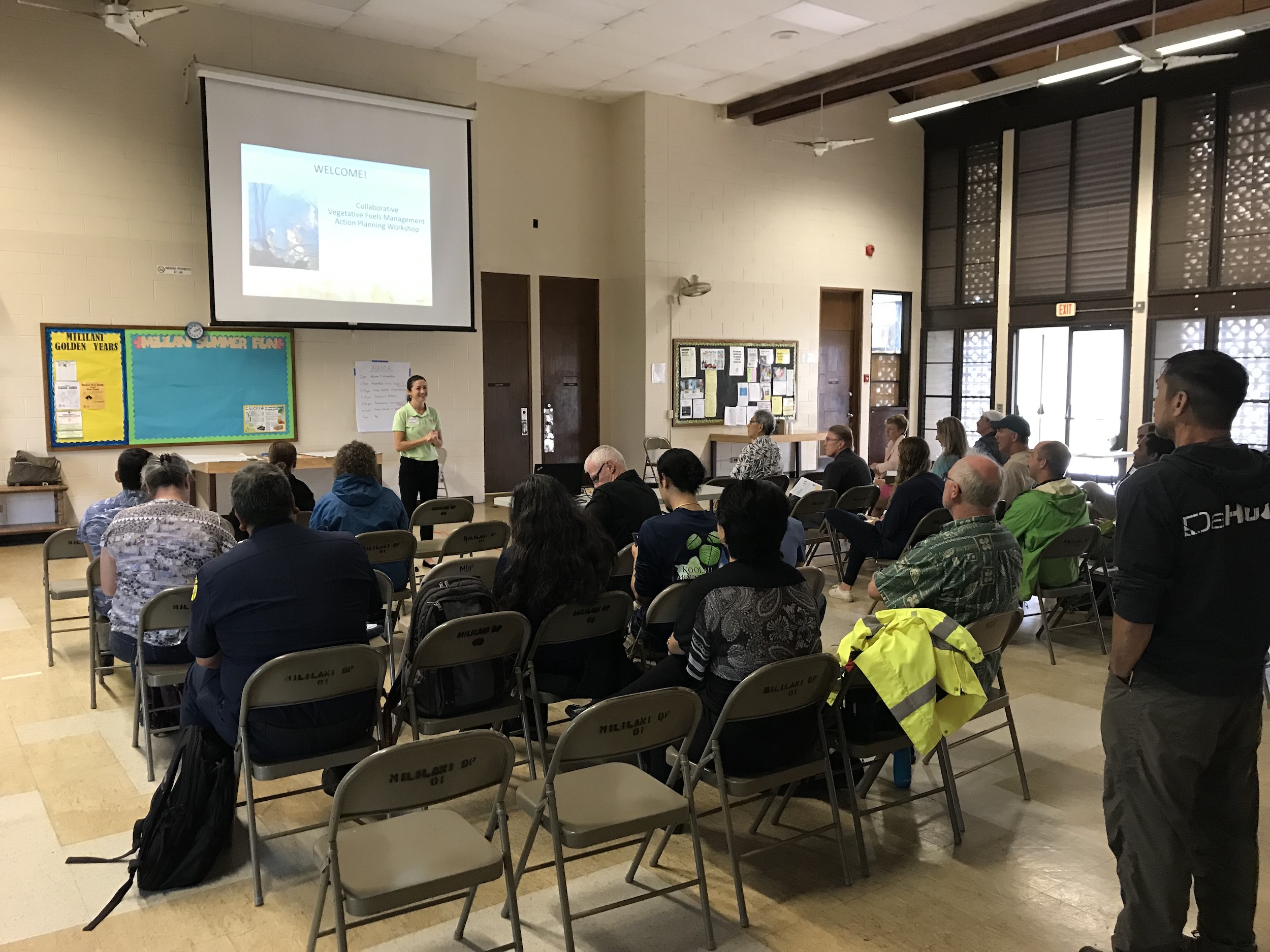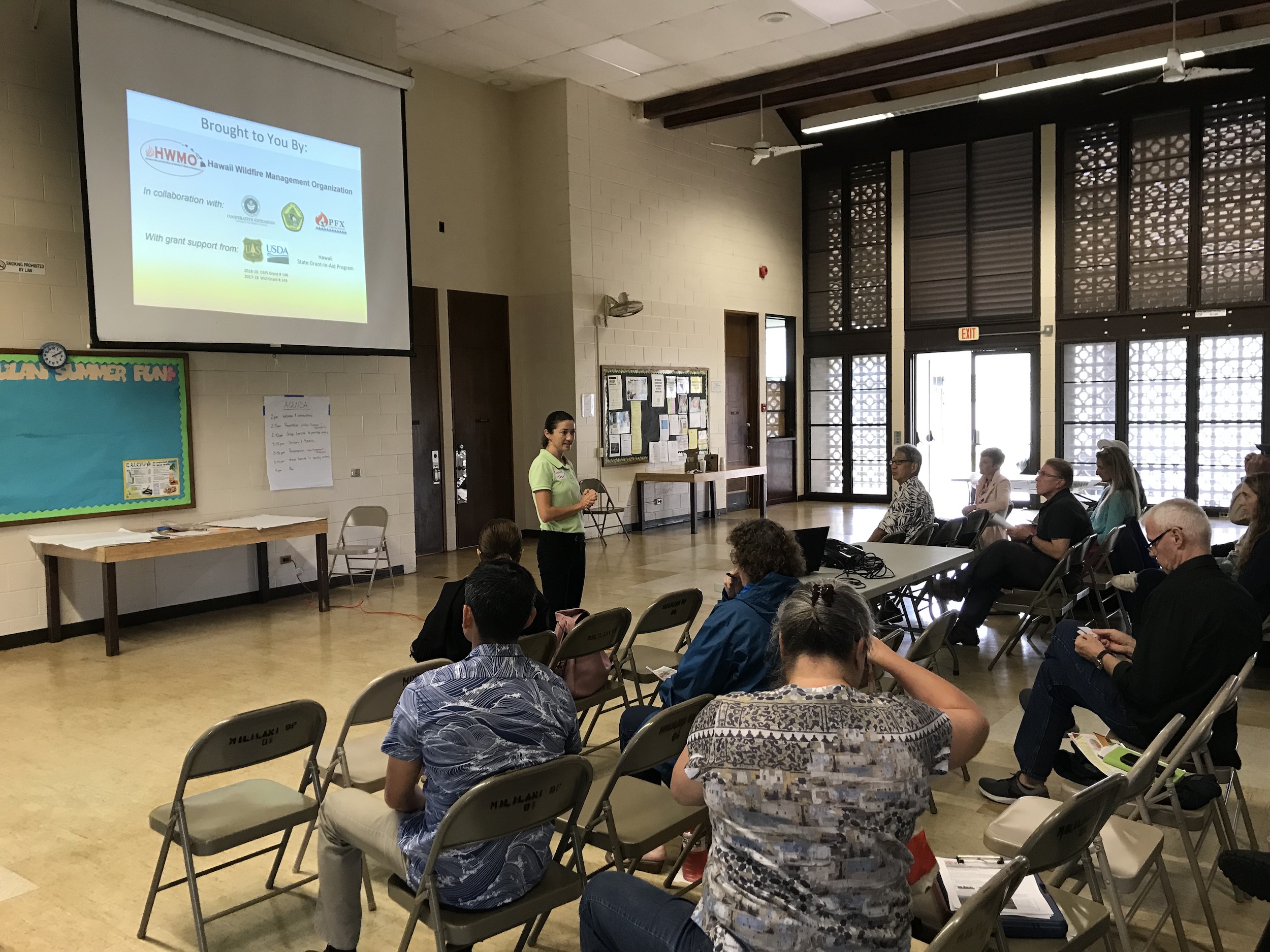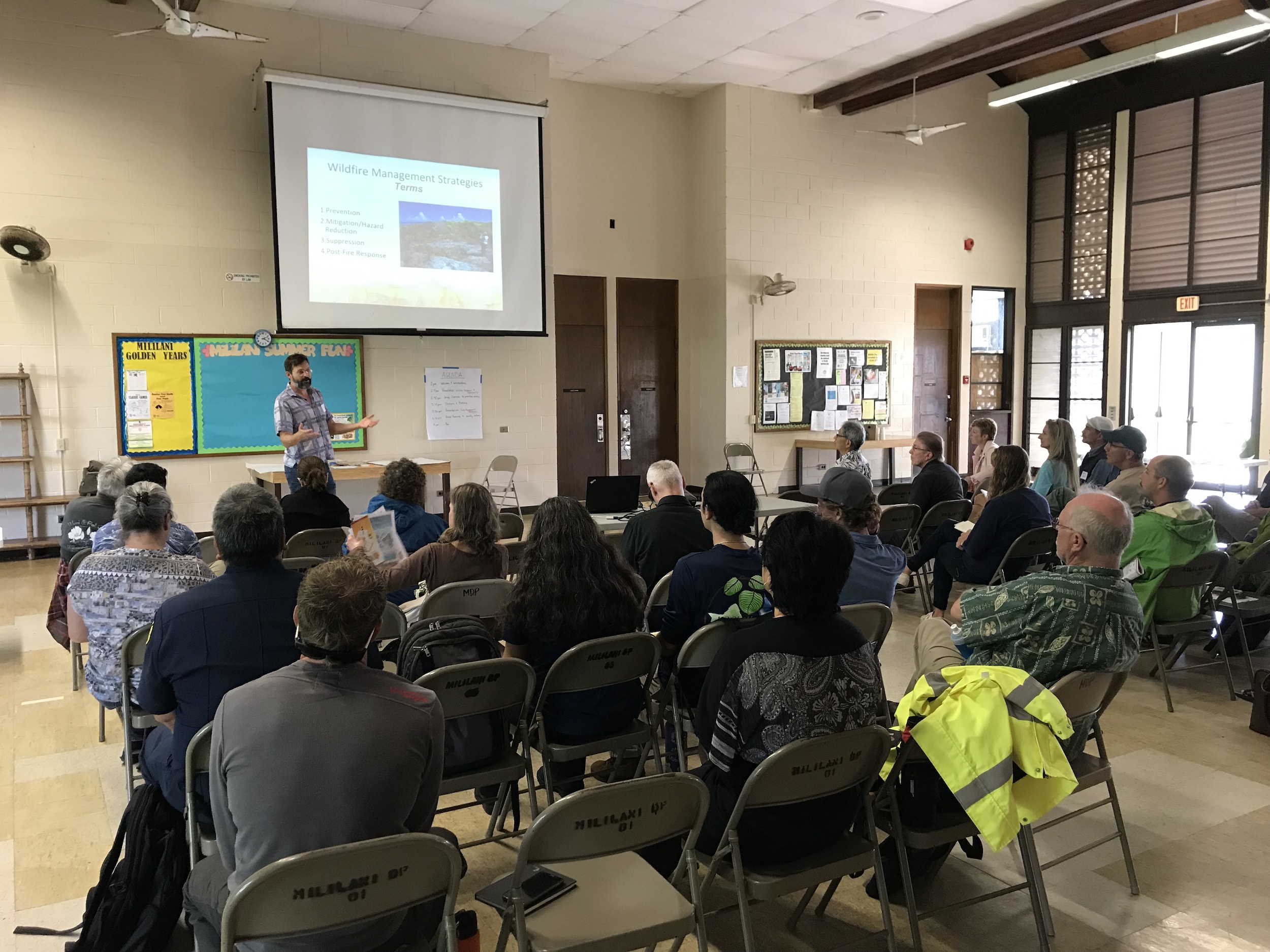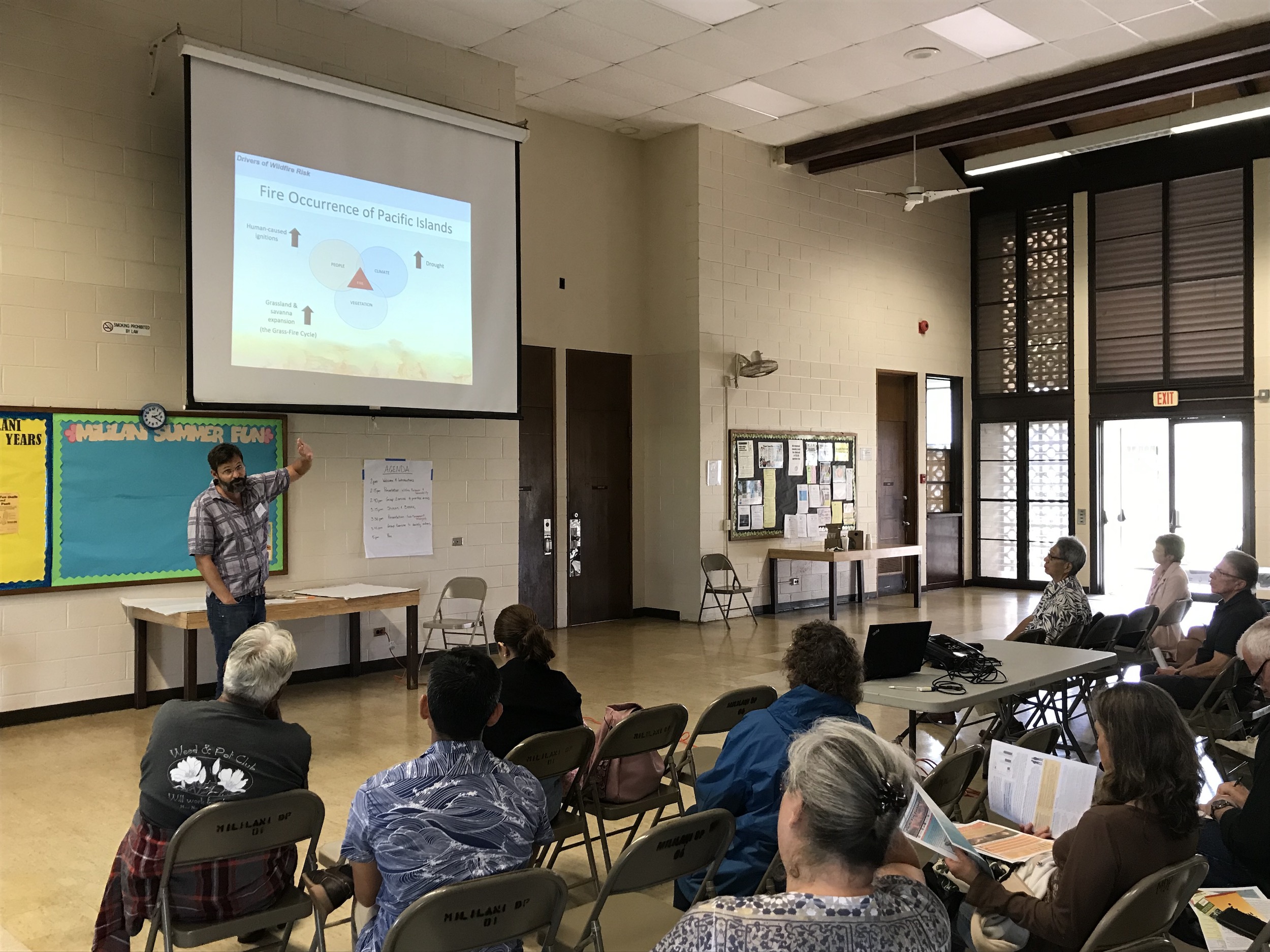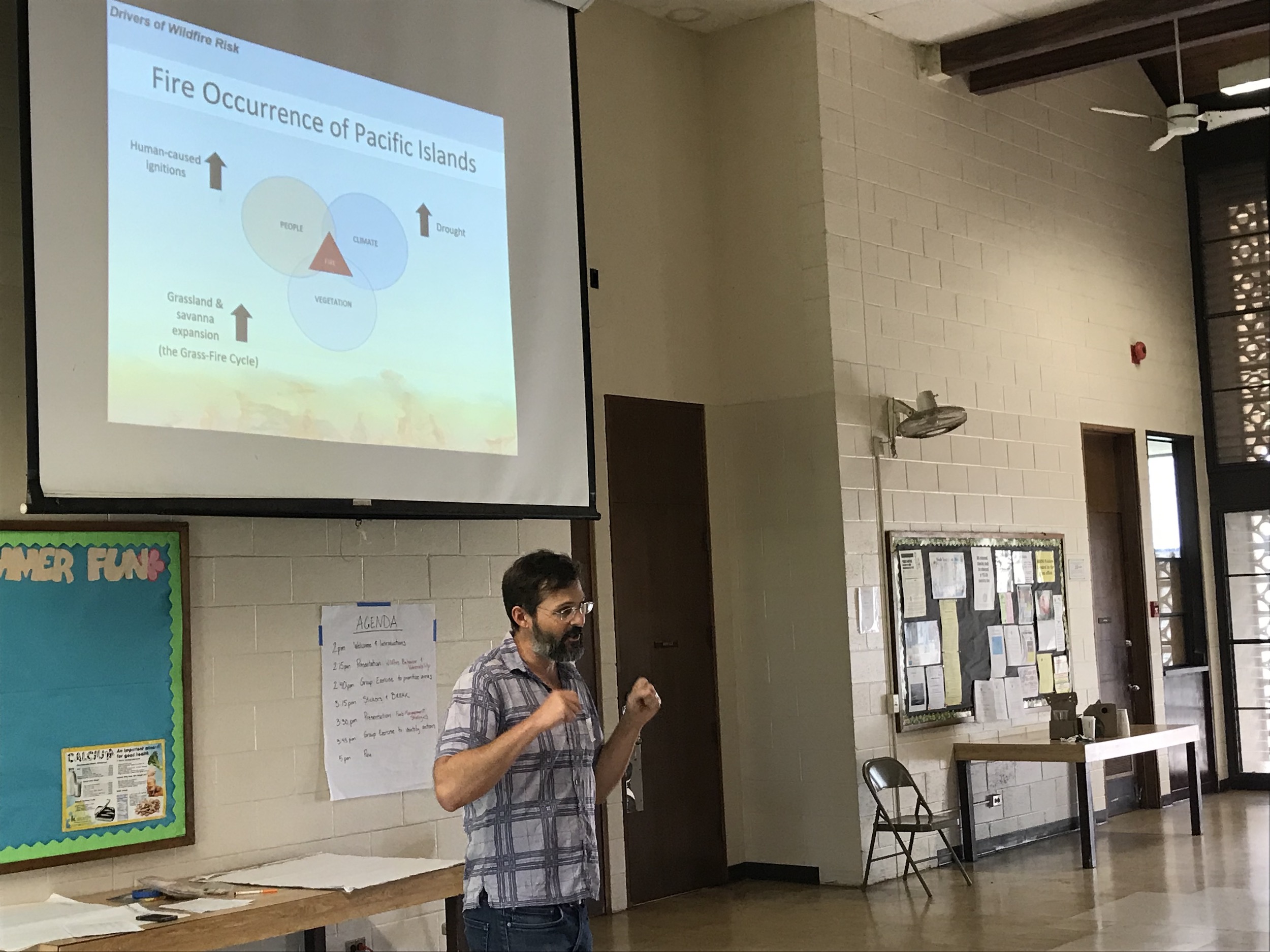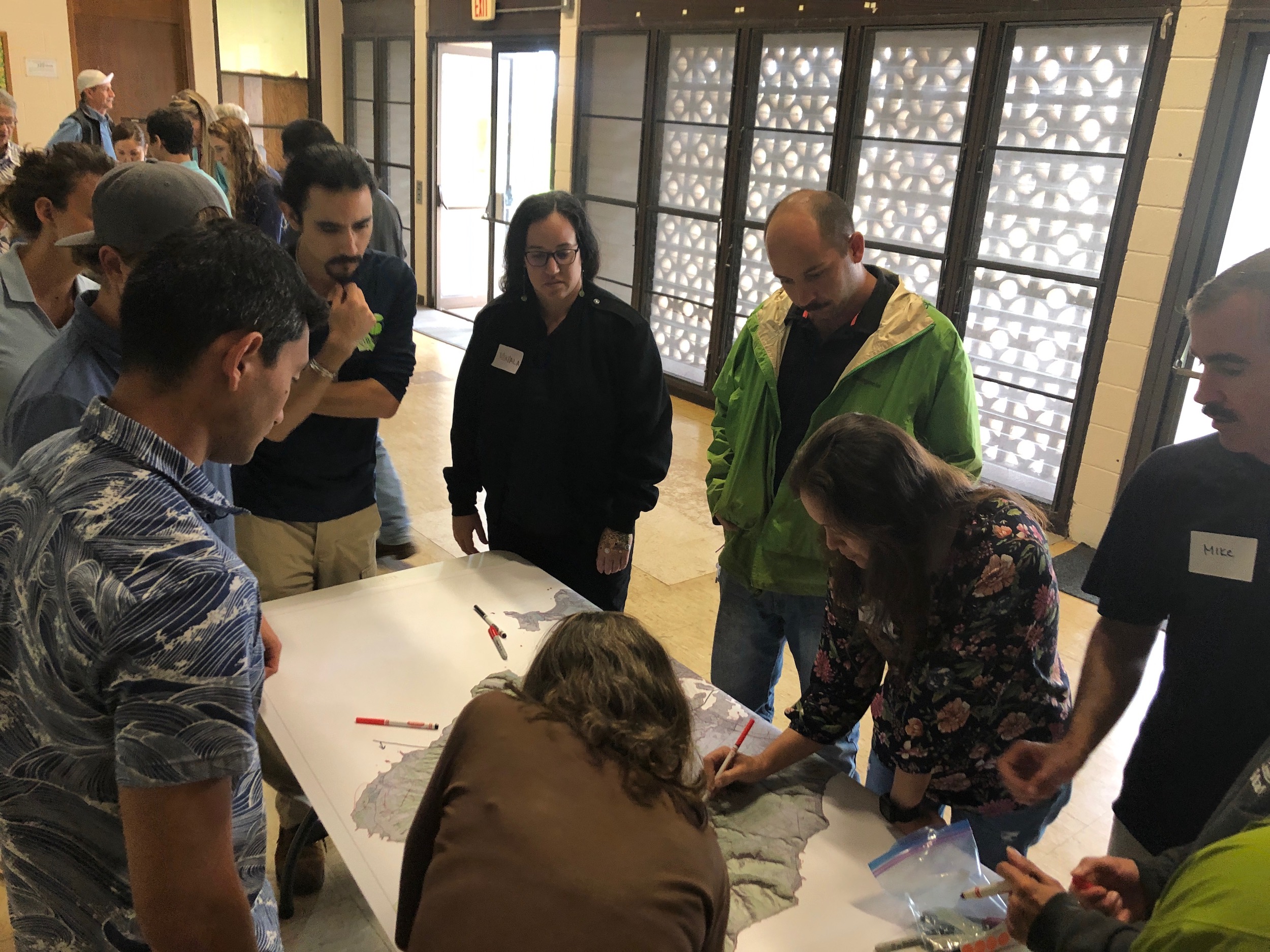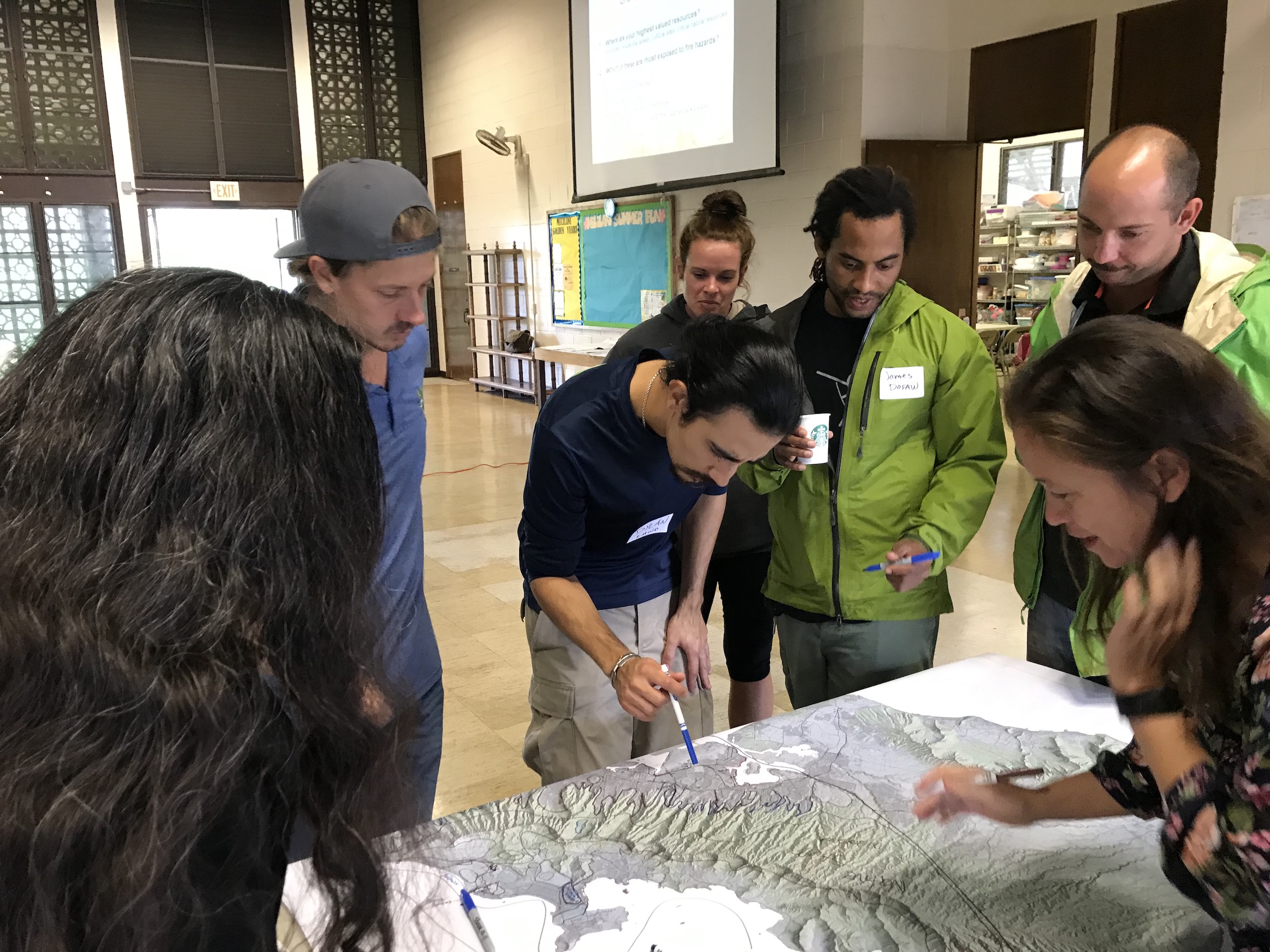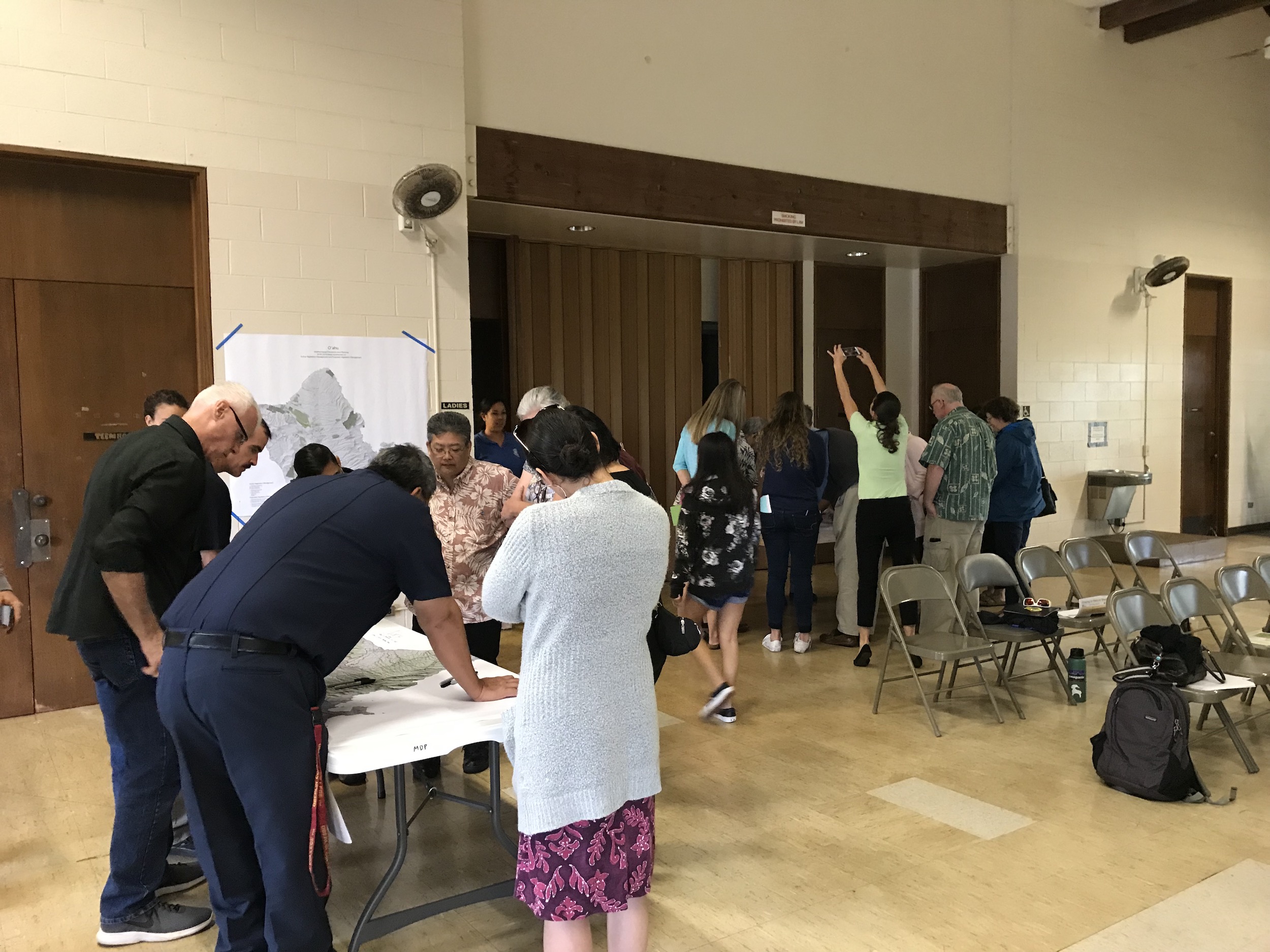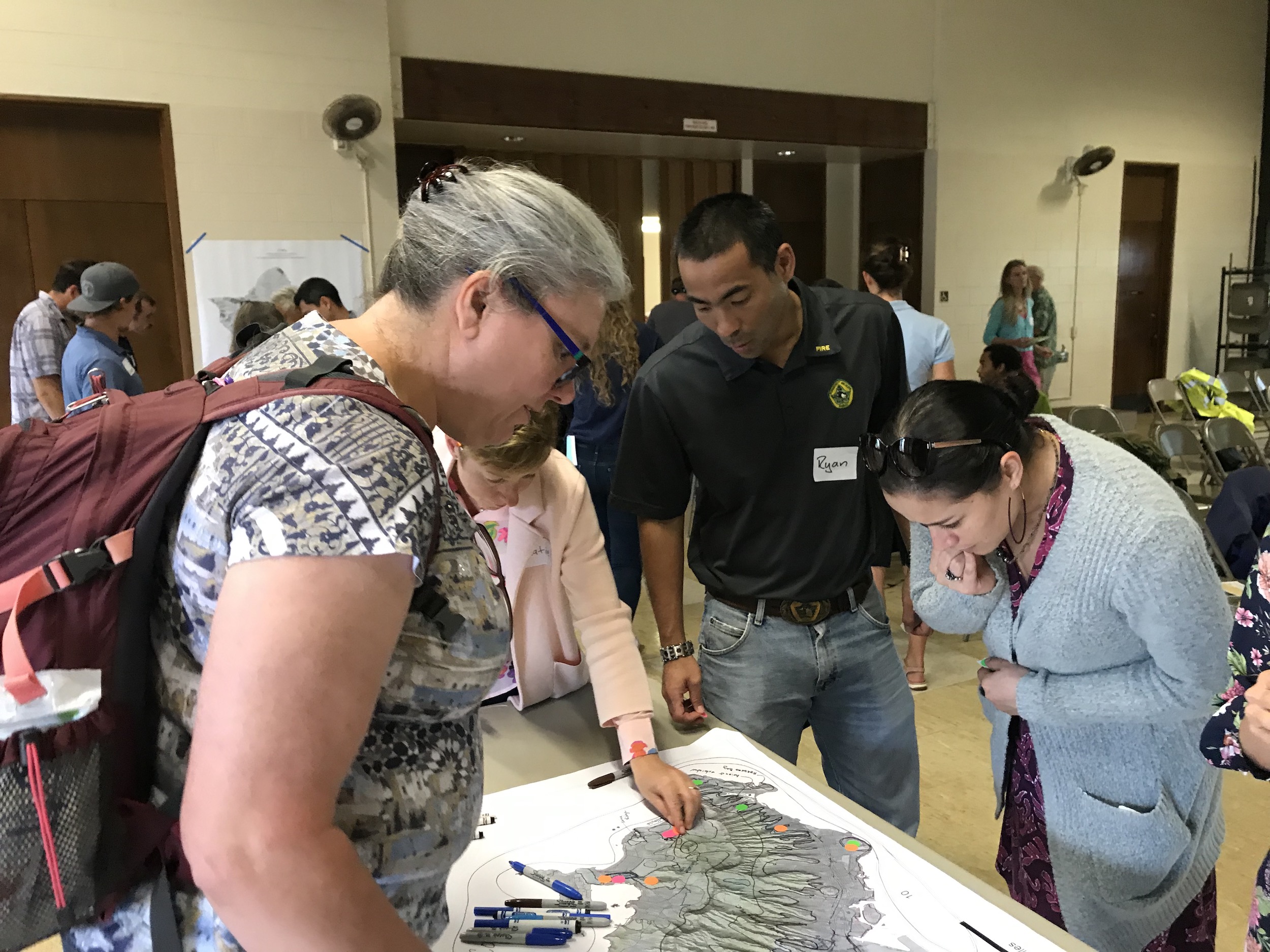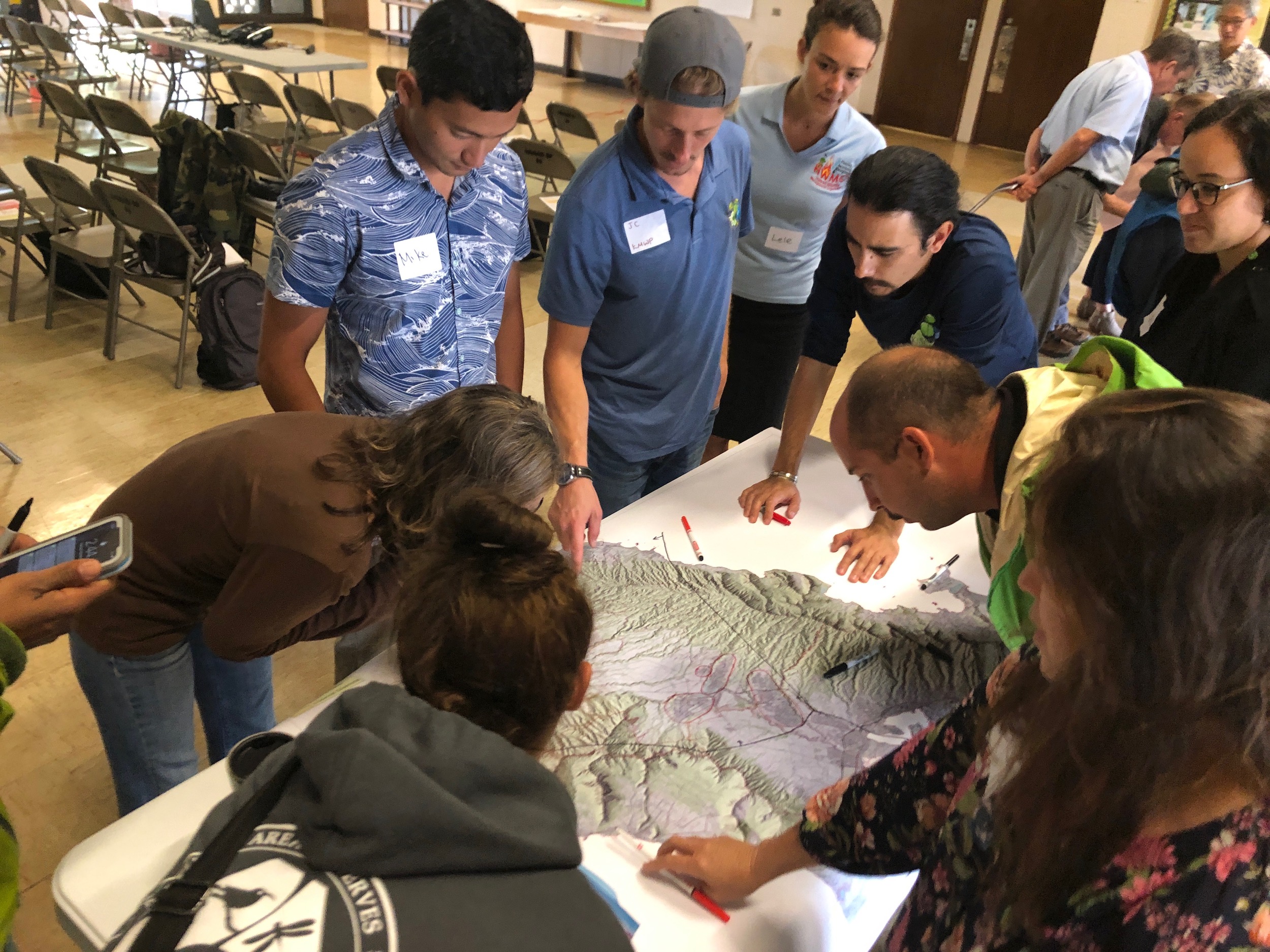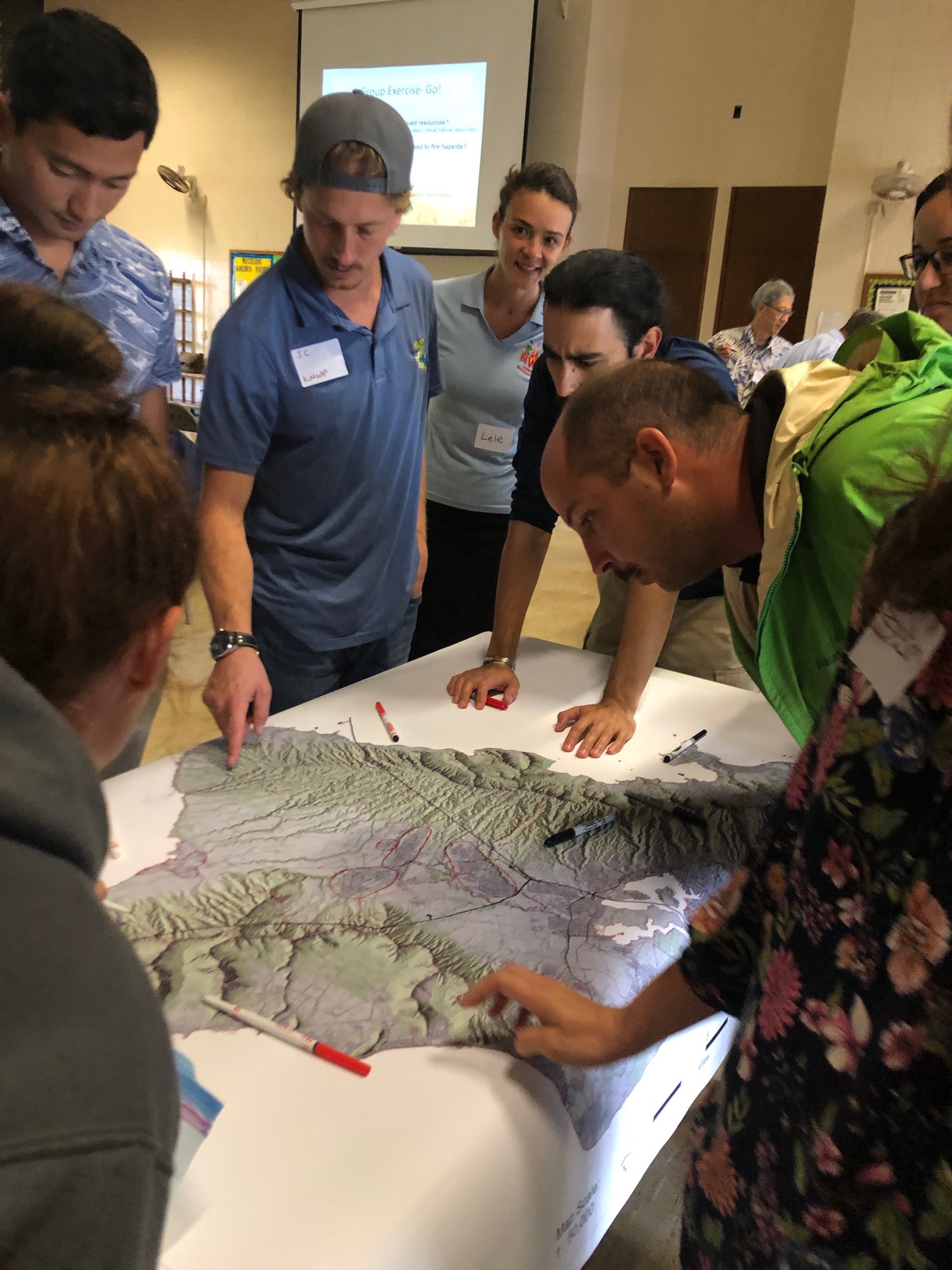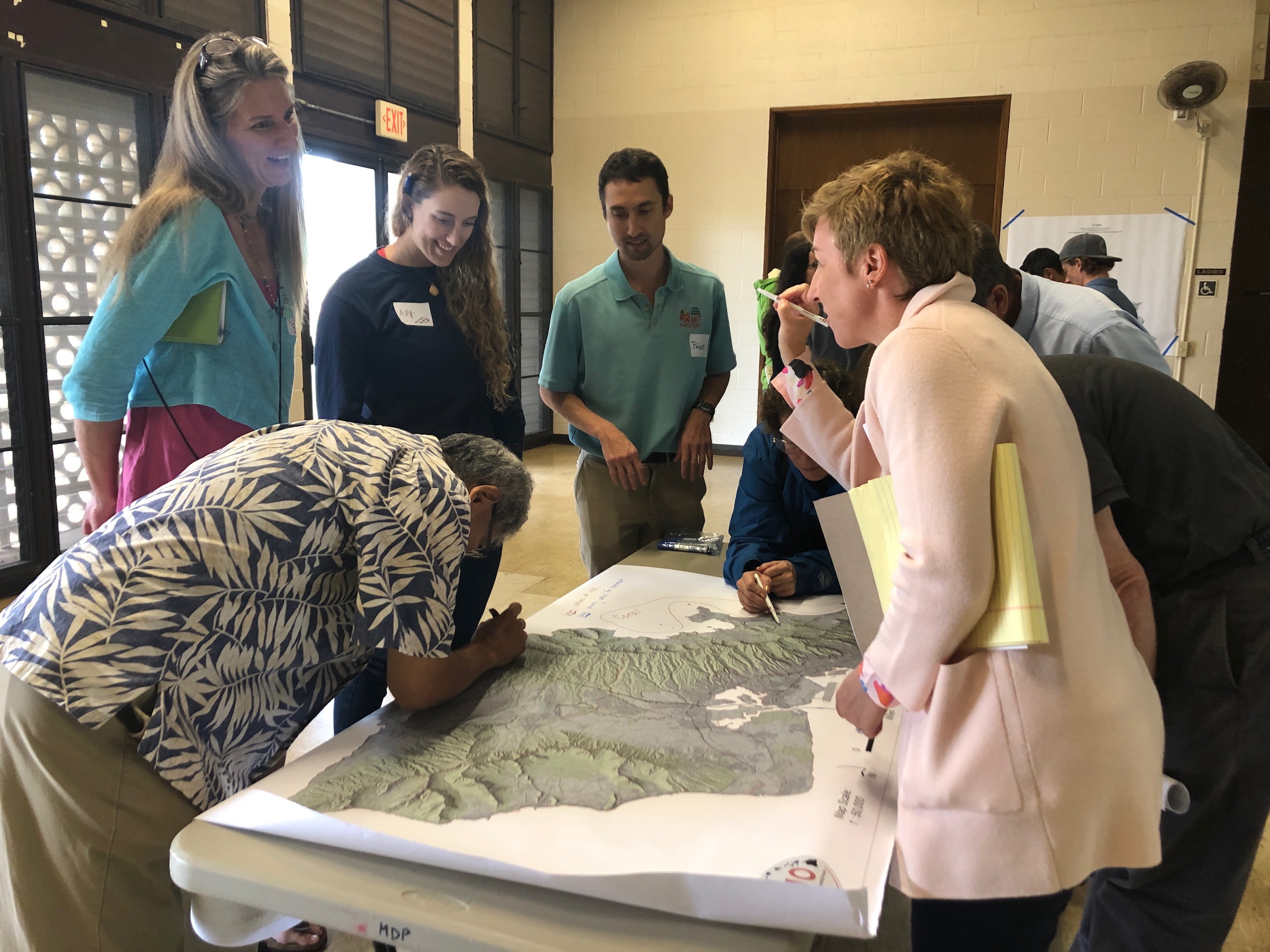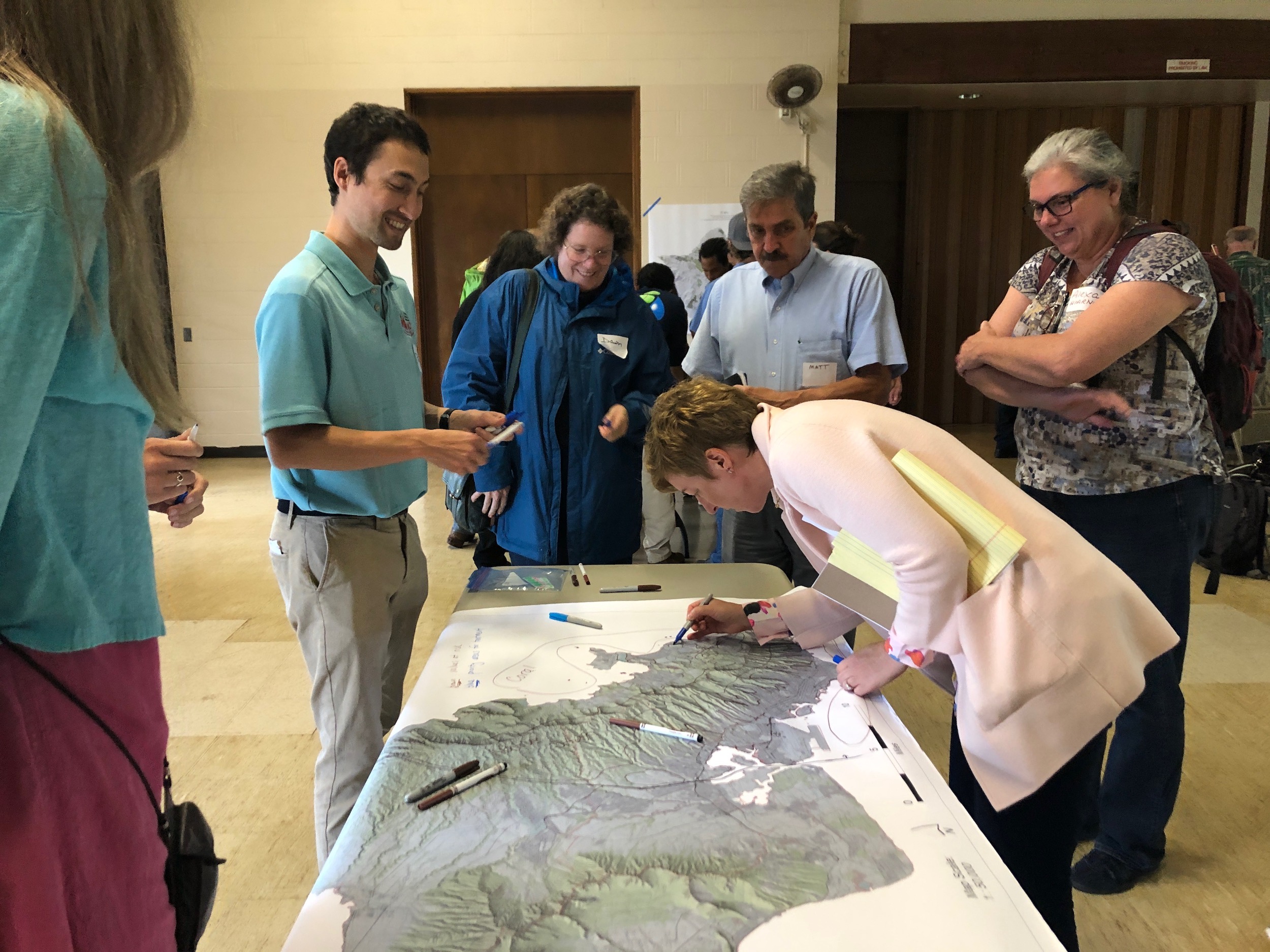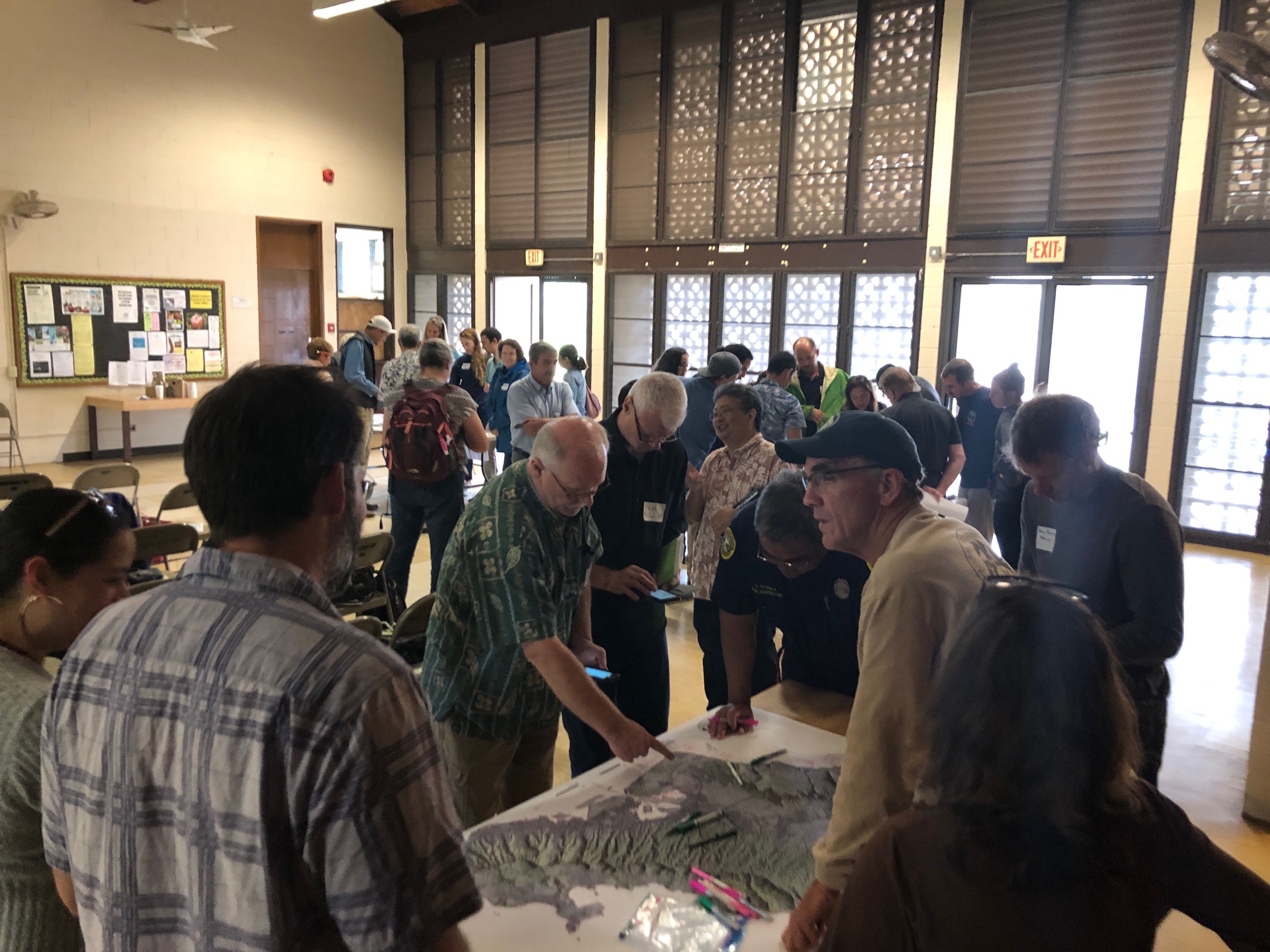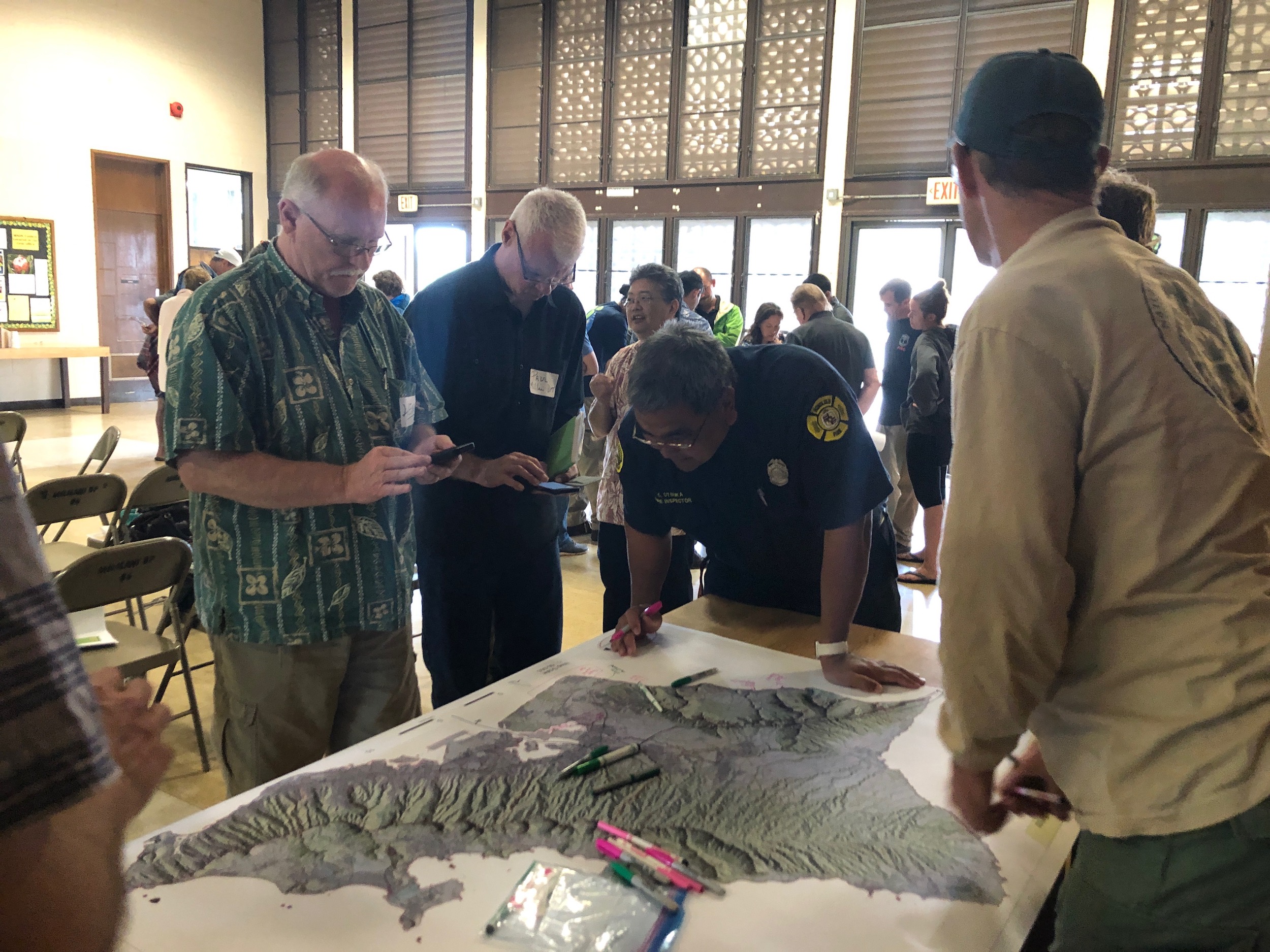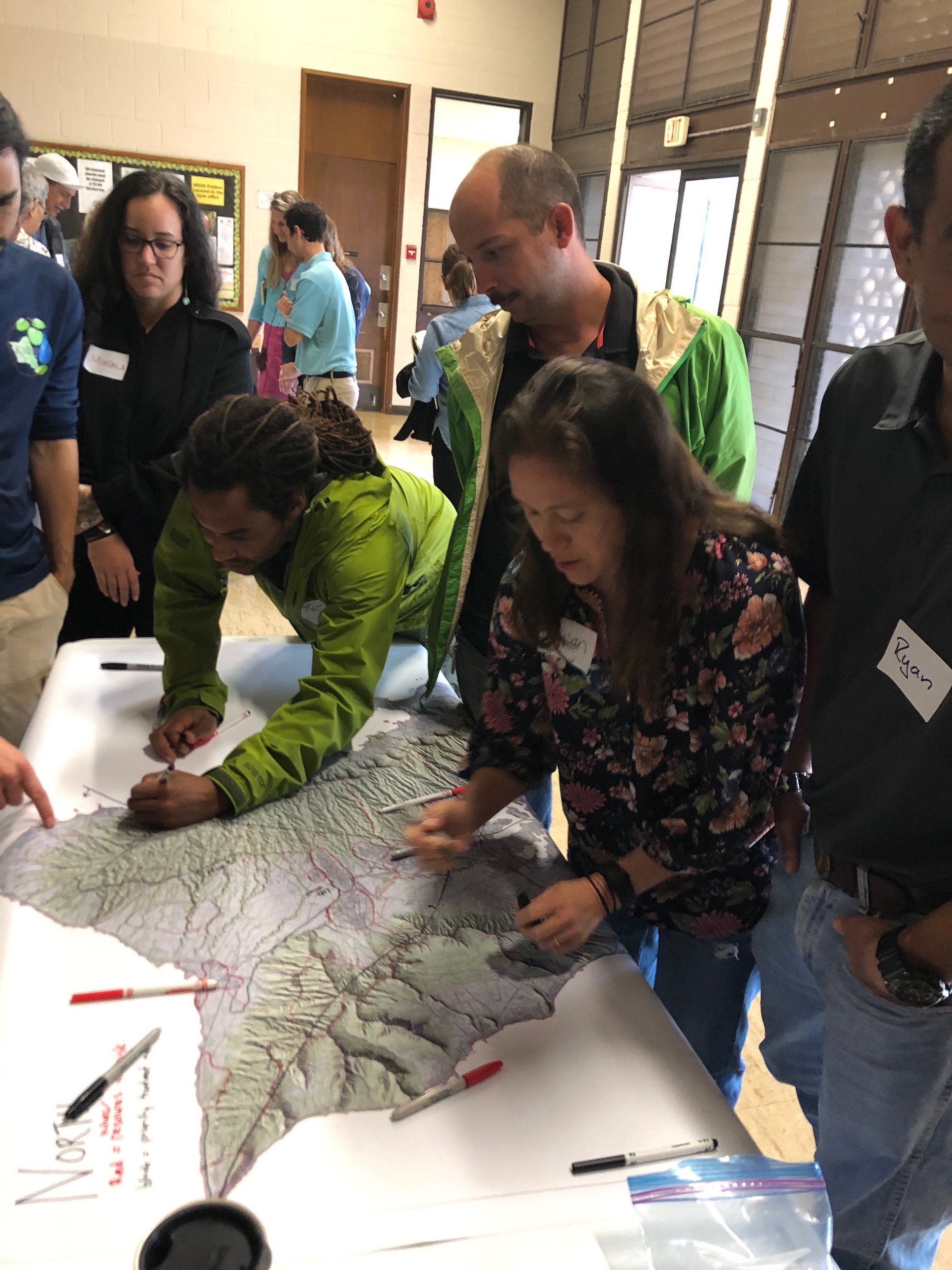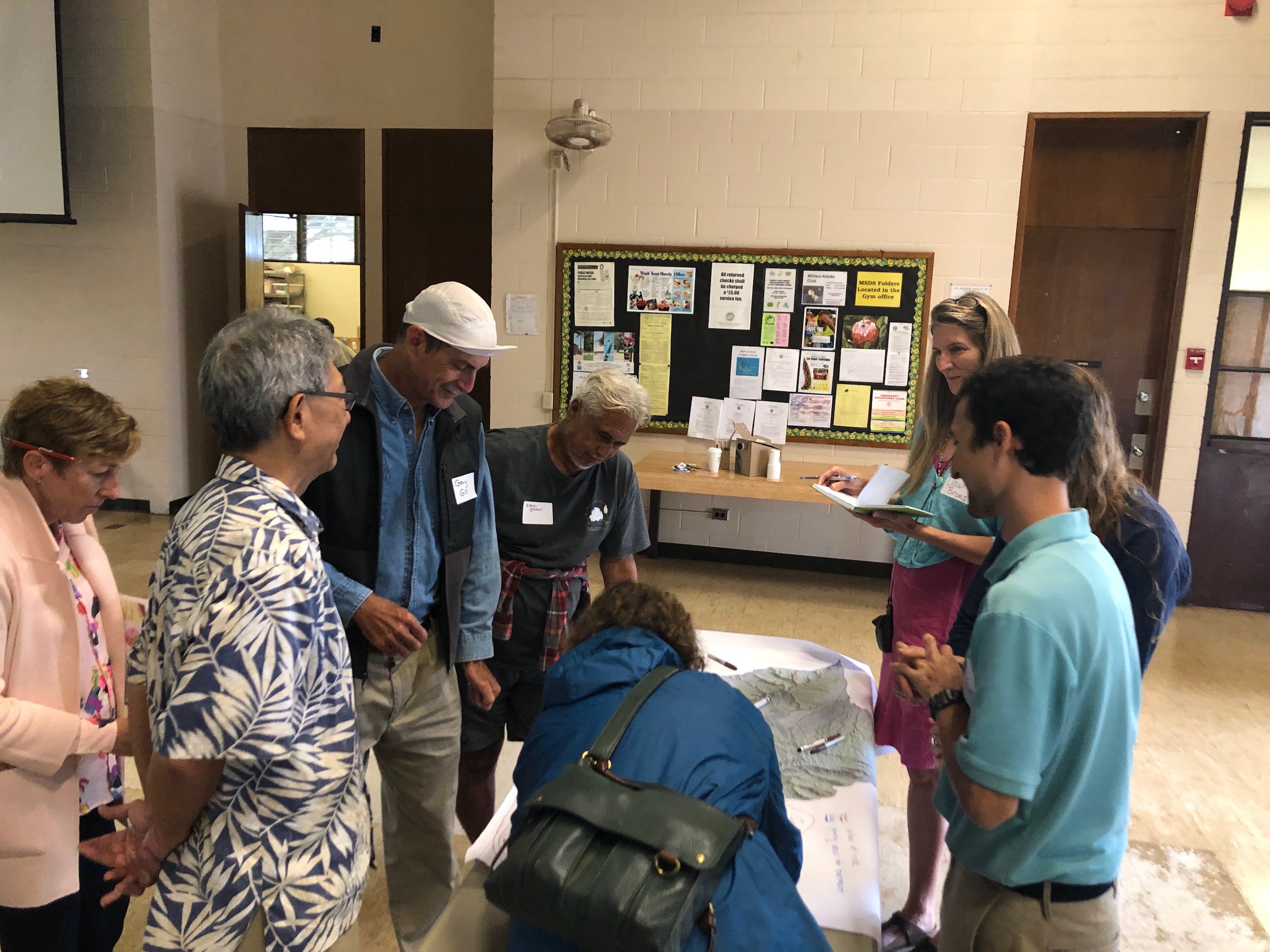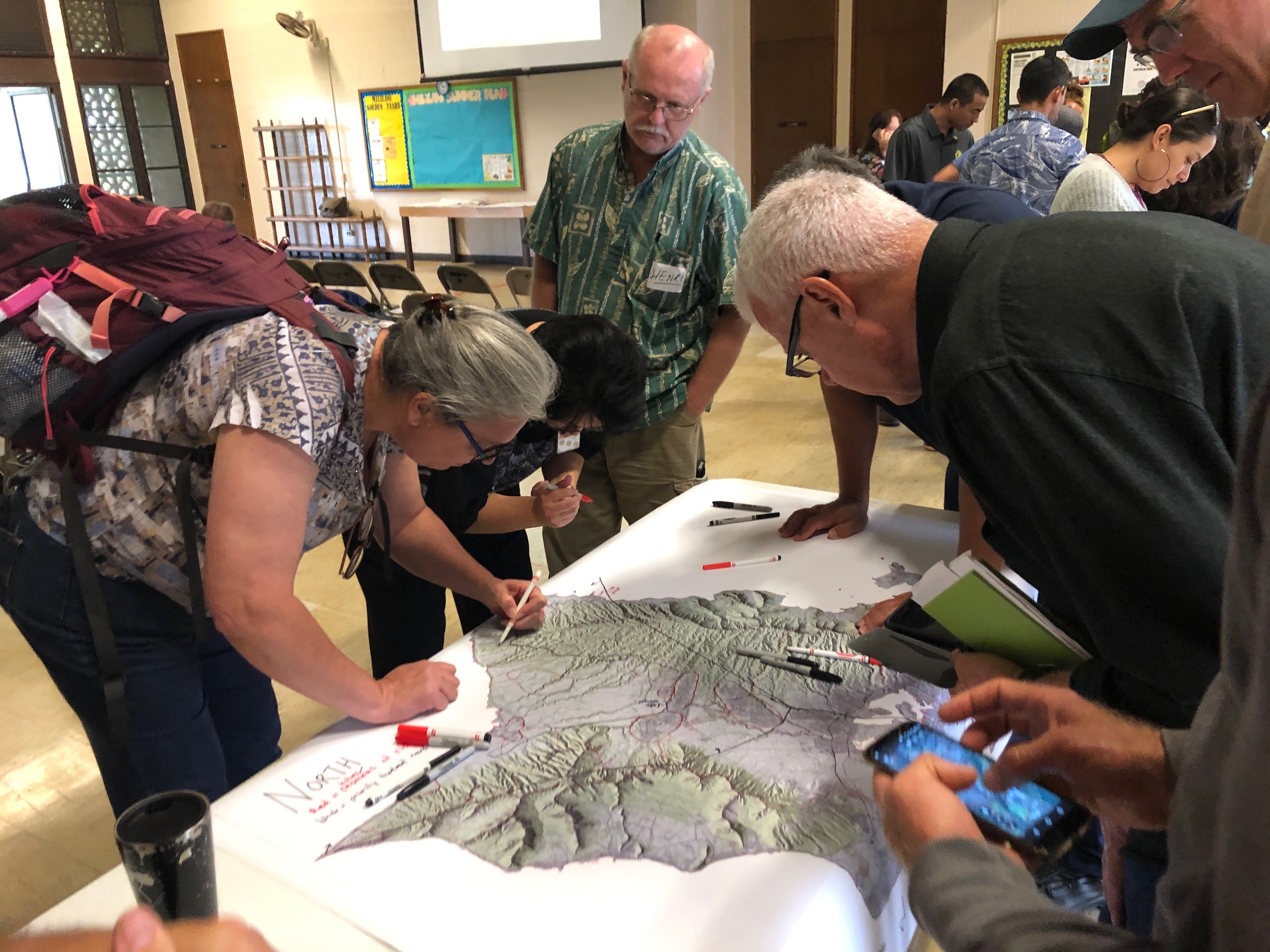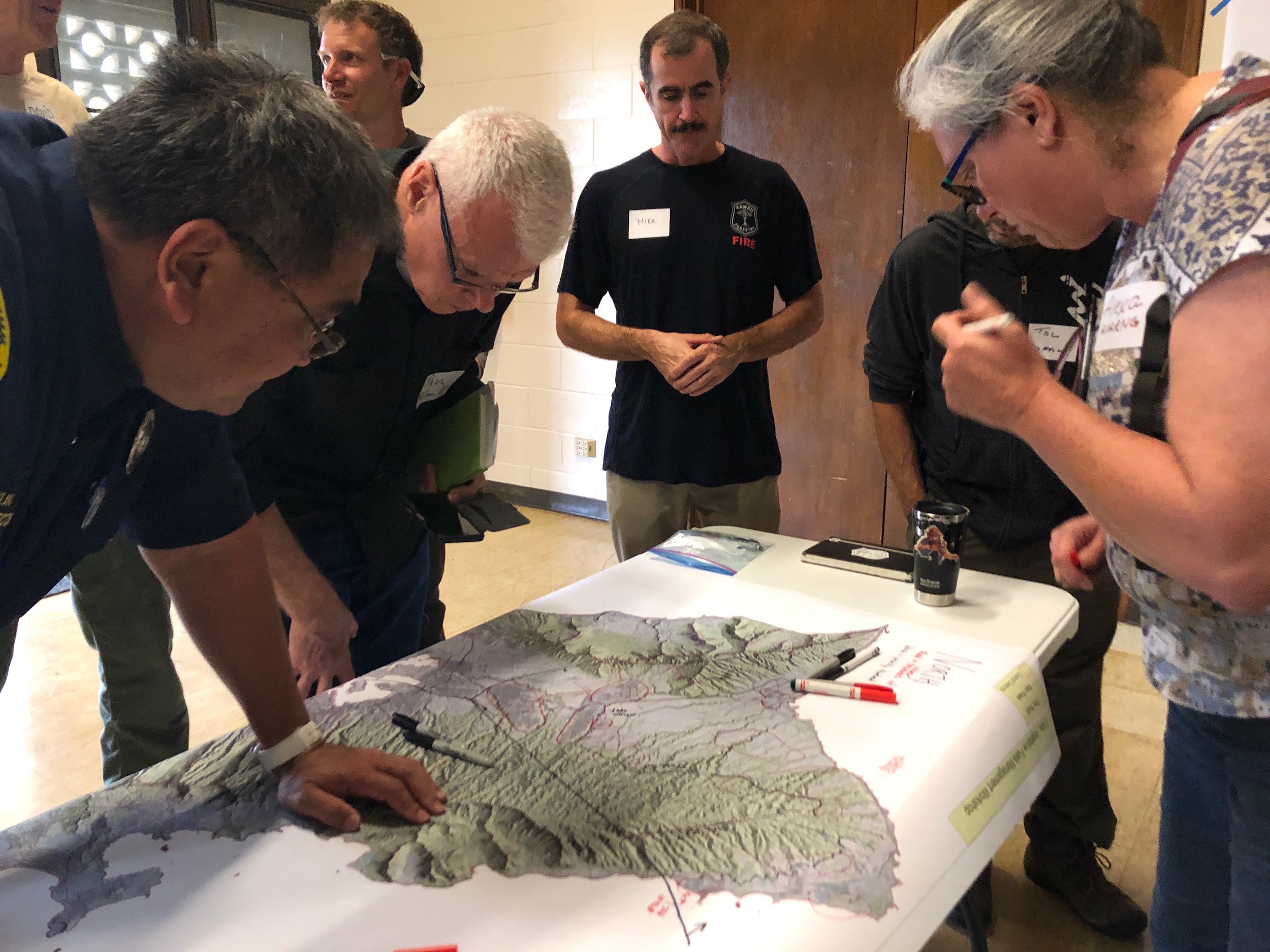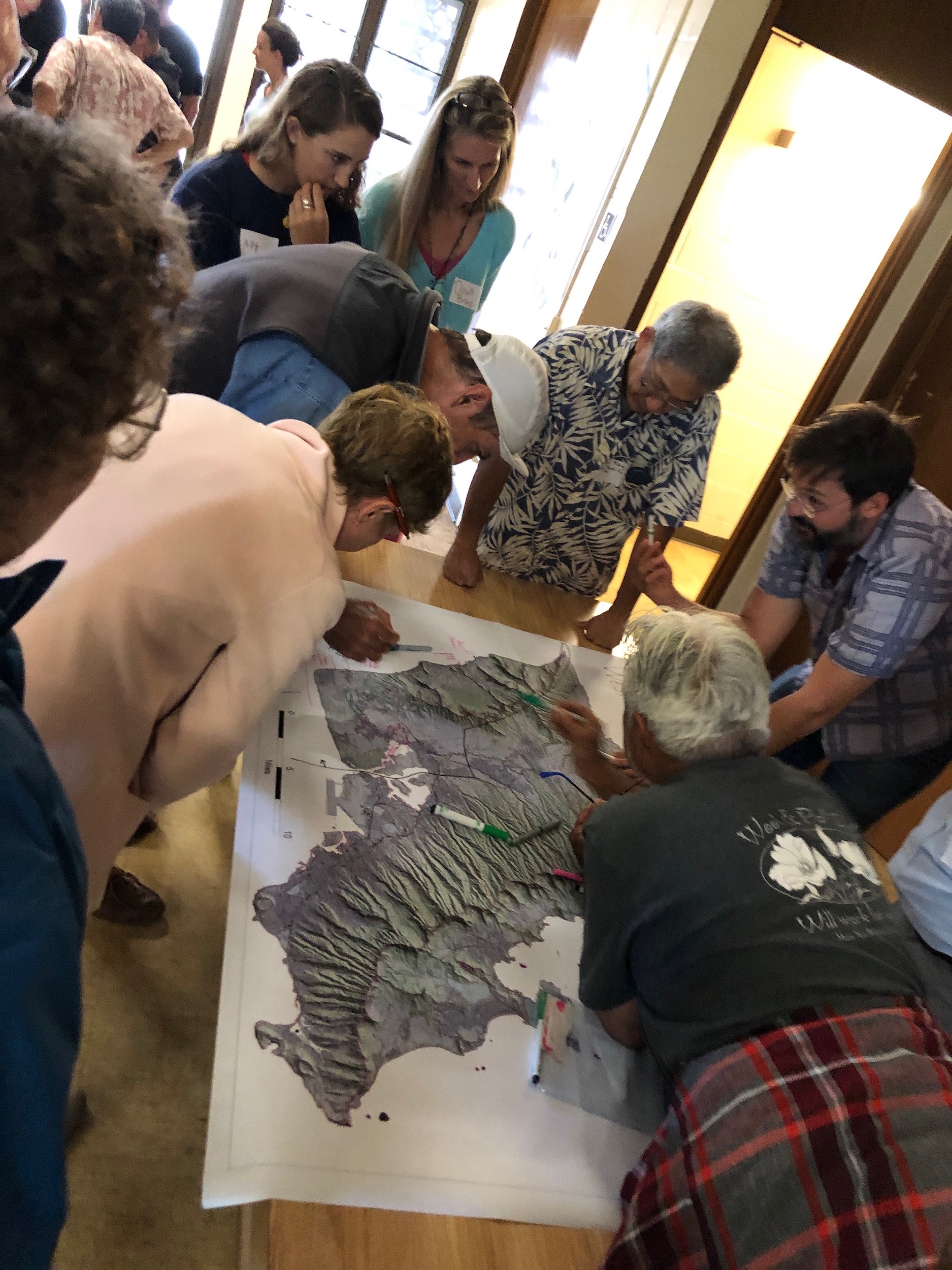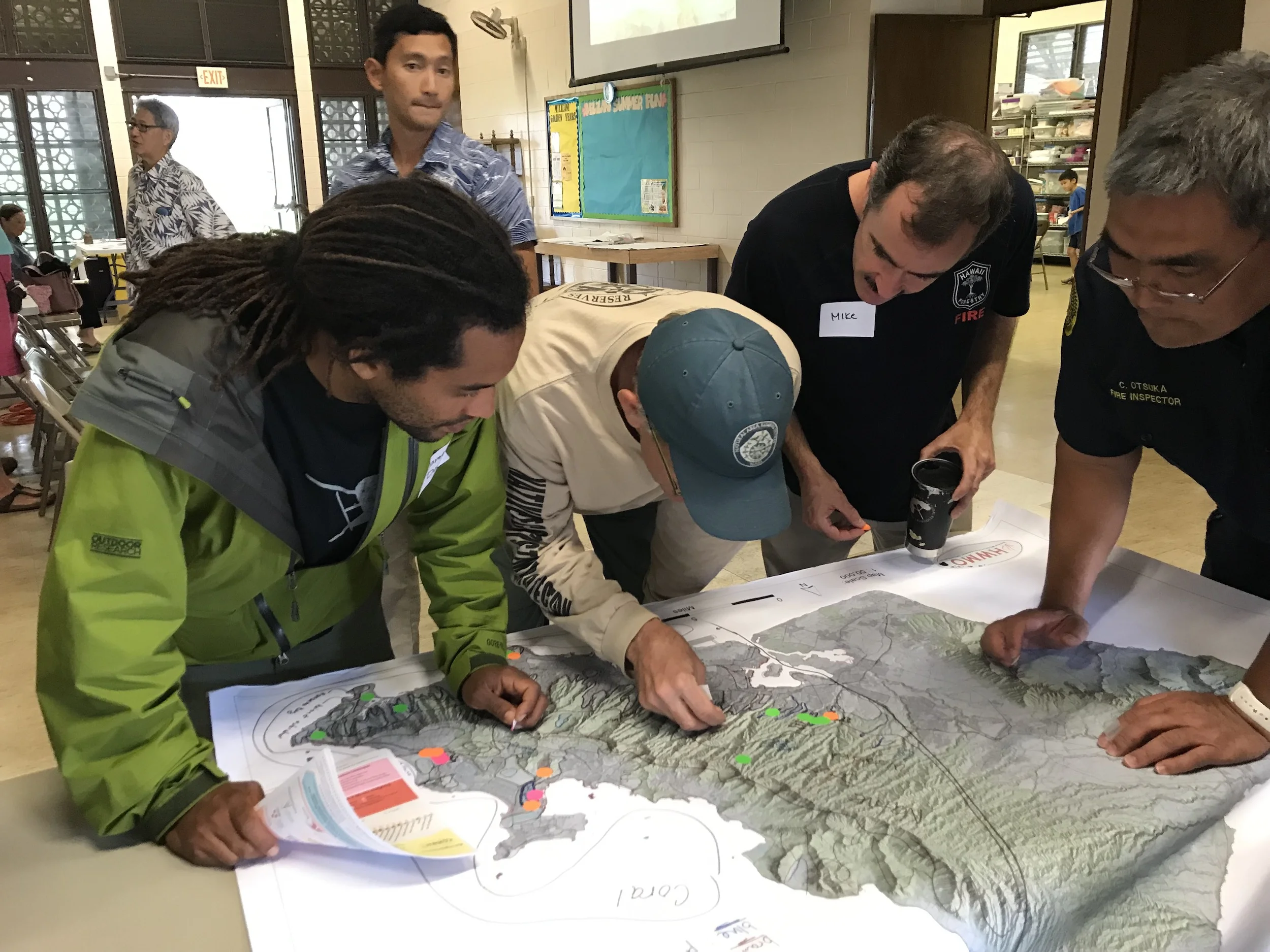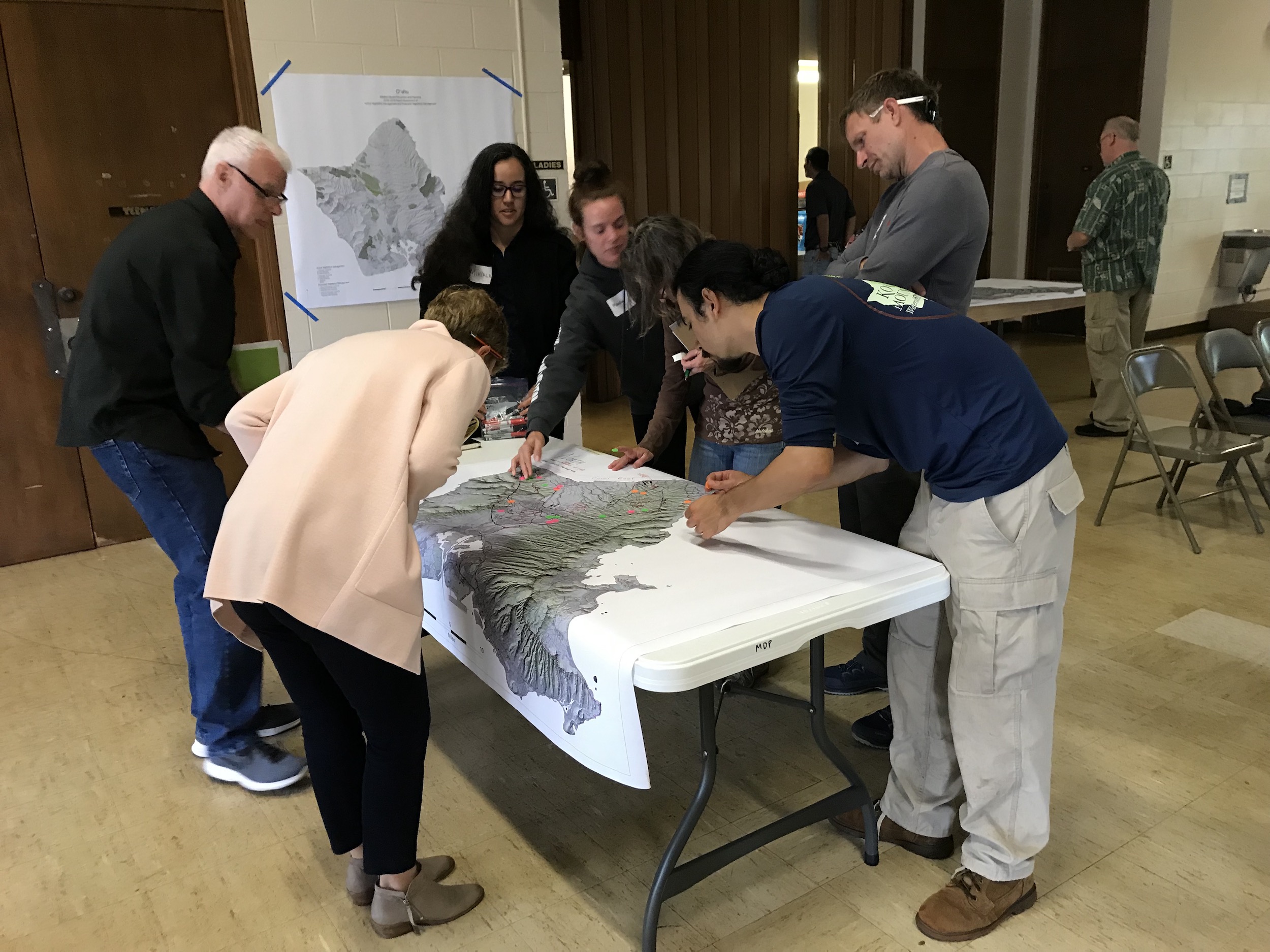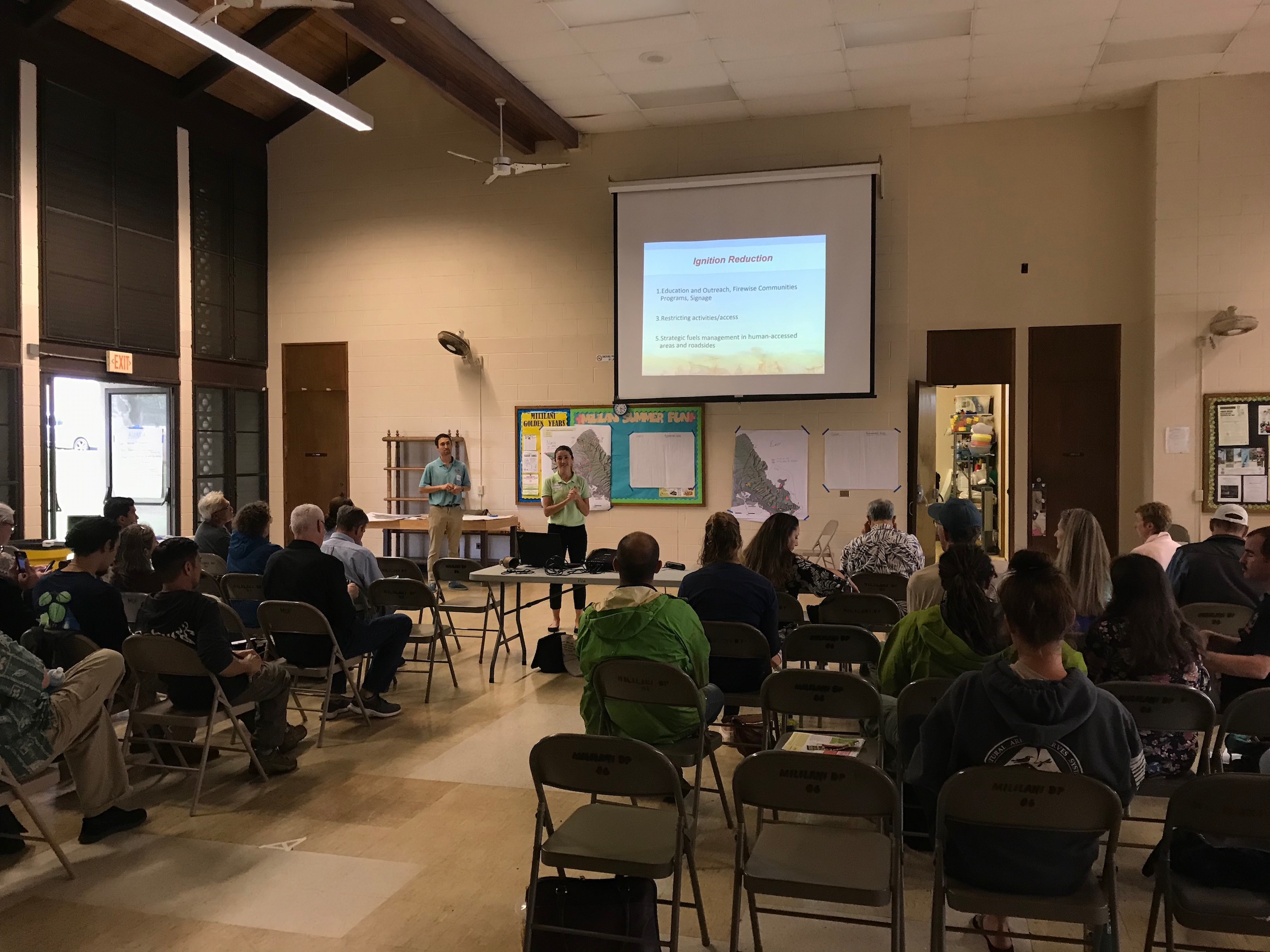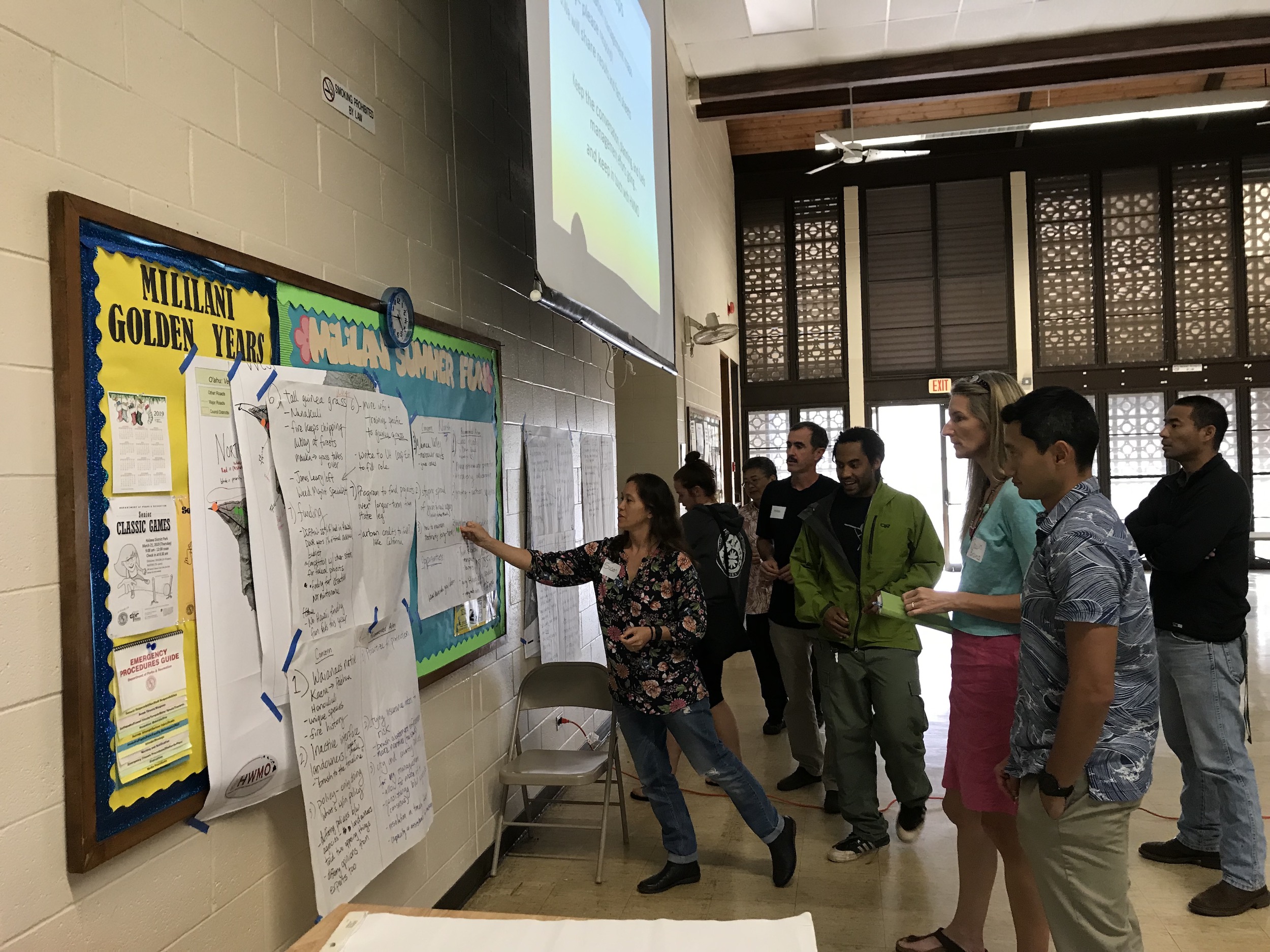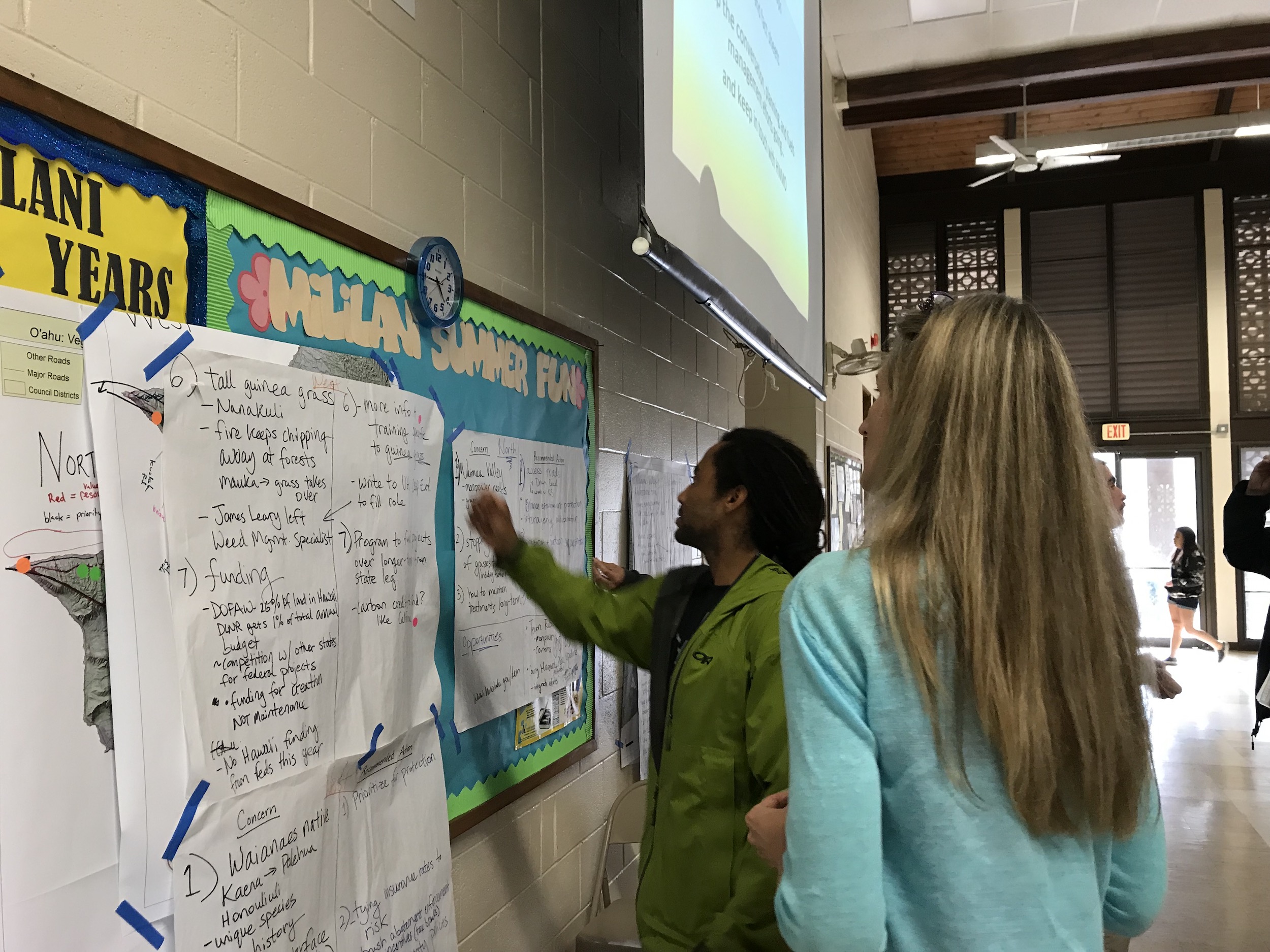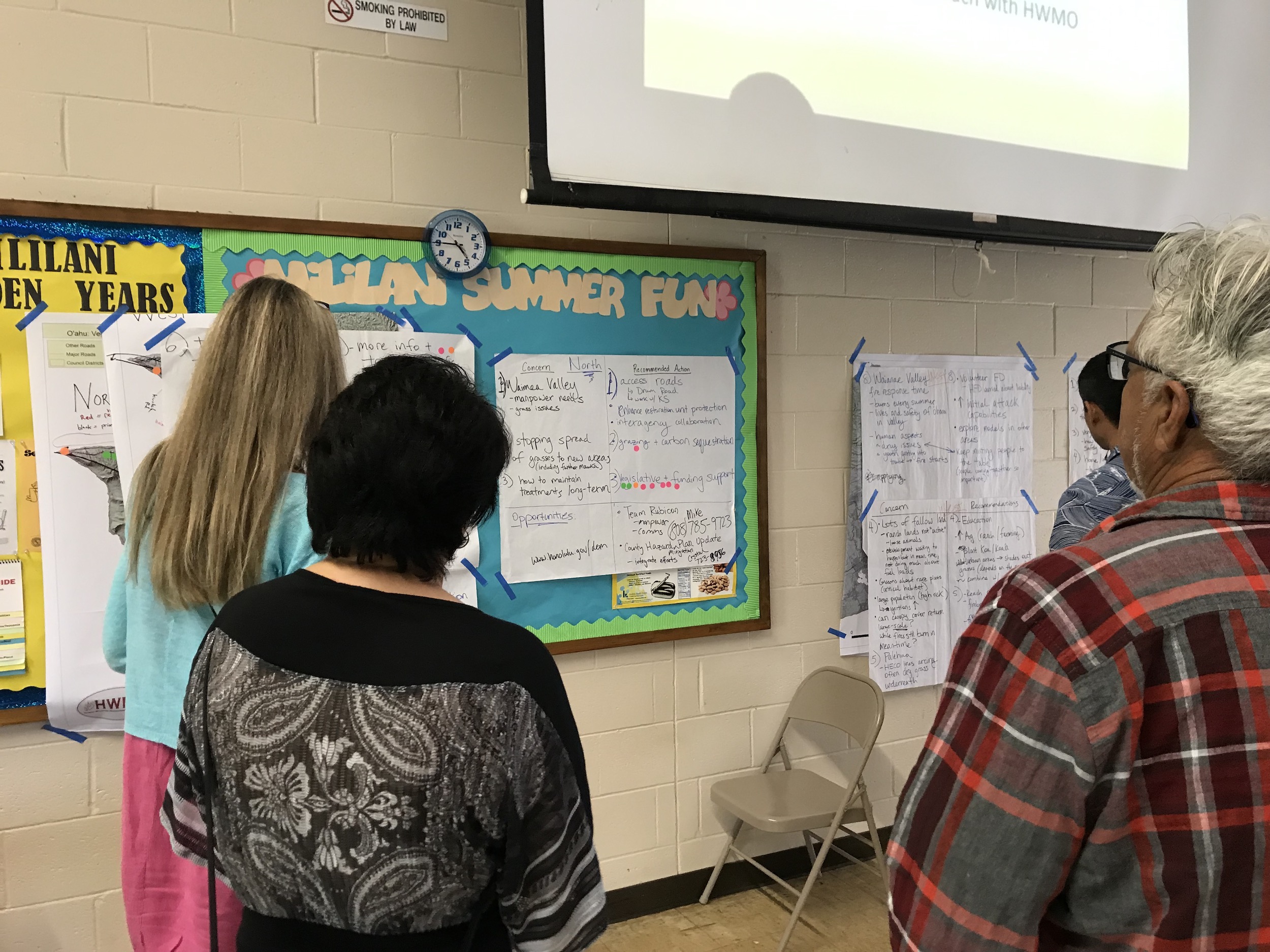Thank you to everyone who joined us!
Fire follows fuel. On February 19 at the Mililani District Park, we convened a large group of 33 people on Oahu representing a patchwork of different agencies, groups, and organizations across a variety of fields to come together to plan for collaborative, large-scale vegetation management to reduce wildfire risks throughout the island. This was part of a series of workshops on Oahu, Kauai, and Hawaii Island we held in February on this matter (we had a similar meeting on Maui in 2018).
During the workshop, participants:
Checked out the results of recent efforts to map current management of hazardous vegetative fuels (thanks to all of the information that partners contributed).
Identified and discussed shared regional fuels management priorities to mitigate the risks of wildfire across our island landscapes through a facilitated series of small and large group conversations.
Marking values at risk and areas for fuels treatments.
More identifying of key areas.
Voting for priority project ideas.
The knowledge and priorities of the participants will contribute to planning next steps in the ongoing collaboration to manage vegetative fuels to reduce wildfire and protect our communities and natural resources.
We are all in this together and it takes all of us!
Stay tuned via our website, social media, and e-newsletter (sign up at the bottom of this page) for final project-related products before this summer.
Mahalo DOFAW, UH CTAHR Cooperative Extension / Pacific Fire Exchange for co-organizing with us.
